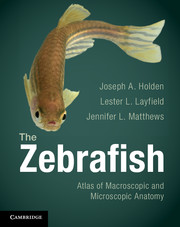Book contents
- Frontmatter
- Contents
- Preface
- Acknowledgments
- Chapter 1 Introduction
- Chapter 2 Cross section and longitudinal section atlas
- Chapter 3 Integument (skin)
- Chapter 4 Digestive system
- Chapter 5 Respiratory system
- Chapter 6 Circulatory system
- Chapter 7 Liver and gallbladder
- Chapter 8 Pancreas
- Chapter 9 Endocrine organs
- Chapter 10 Kidney
- Chapter 11 Reproductive system
- Chapter 12 Sensory systems
- Chapter 13 Central nervous system
- Chapter 14 Miscellaneous structures
- Chapter 15 Musculoskeletal system
- Index
- References
Chapter 4 - Digestive system
Published online by Cambridge University Press: 05 February 2013
- Frontmatter
- Contents
- Preface
- Acknowledgments
- Chapter 1 Introduction
- Chapter 2 Cross section and longitudinal section atlas
- Chapter 3 Integument (skin)
- Chapter 4 Digestive system
- Chapter 5 Respiratory system
- Chapter 6 Circulatory system
- Chapter 7 Liver and gallbladder
- Chapter 8 Pancreas
- Chapter 9 Endocrine organs
- Chapter 10 Kidney
- Chapter 11 Reproductive system
- Chapter 12 Sensory systems
- Chapter 13 Central nervous system
- Chapter 14 Miscellaneous structures
- Chapter 15 Musculoskeletal system
- Index
- References
Summary
The zebrafish digestive system can be divided into anterior and posterior portions. The anterior portion is composed of the mouth, buccal cavity, and oropharynx. The esophagus, intestinal bulb (proximal intestine), mid intestine, posterior intestine, and anus comprise the posterior portion–4. The oropharynx is the portion of the digestive system running from the mouth to just posterior to the pharyngeal teeth (Figure 4.1). The esophagus continues caudally and empties into the intestinal bulb, or proximal intestine. Zebrafish are not thought to have true stomachs and the intestinal bulb is a dilated portion of the intestine, located between the esophagus and mid intestine (Figure 4.1). Pyloric caeca, blind-ended finger-like pouches arising from the anterior intestine, are not present in zebrafish. They are only present in fishes with true stomachs. From the intestinal bulb, the digestive tract continues to the mid intestine, then to the posterior intestine, and ends at the anus. Absorption of fats is believed to occur in the intestinal bulb, while absorption of proteins occurs in the mid intestine. The posterior intestine may play a role in osmoregulation.
Oropharynx
The lining of the oropharynx is continuous with the epidermis and begins after the keratinizing squamous epithelium of the lips. The squamous epithelium continues into the buccal cavity. The buccal cavity lacks salivary glands but contains mucous cells and taste buds (Figures 4.2 and 4.3). The oropharyngeal epithelium, like the epidermis, is a non-keratinizing squamous epithelium (Figures 4.2 and 4.3). In the oropharyngeal epithelium, the alarm cells that were so common in the epidermis (Figure 3.2) are no longer present, but many more mucous cells are found (Figure 4.3). No true tongue exists in zebrafish. As in the epidermis, taste buds are present in the epithelium (Figure 4.3). It has been estimated that zebrafish may contain at least 2200 oropharyngeal taste buds. Like the epidermis, the oropharyngeal taste buds are seen to be composed of both light and dark cells (Figure 4.4). The oropharynx begins to acquire a surrounding layer of skeletal muscle distally. Unlike mammals, no salivary gland tissue is present.
- Type
- Chapter
- Information
- The ZebrafishAtlas of Macroscopic and Microscopic Anatomy, pp. 58 - 67Publisher: Cambridge University PressPrint publication year: 2013



